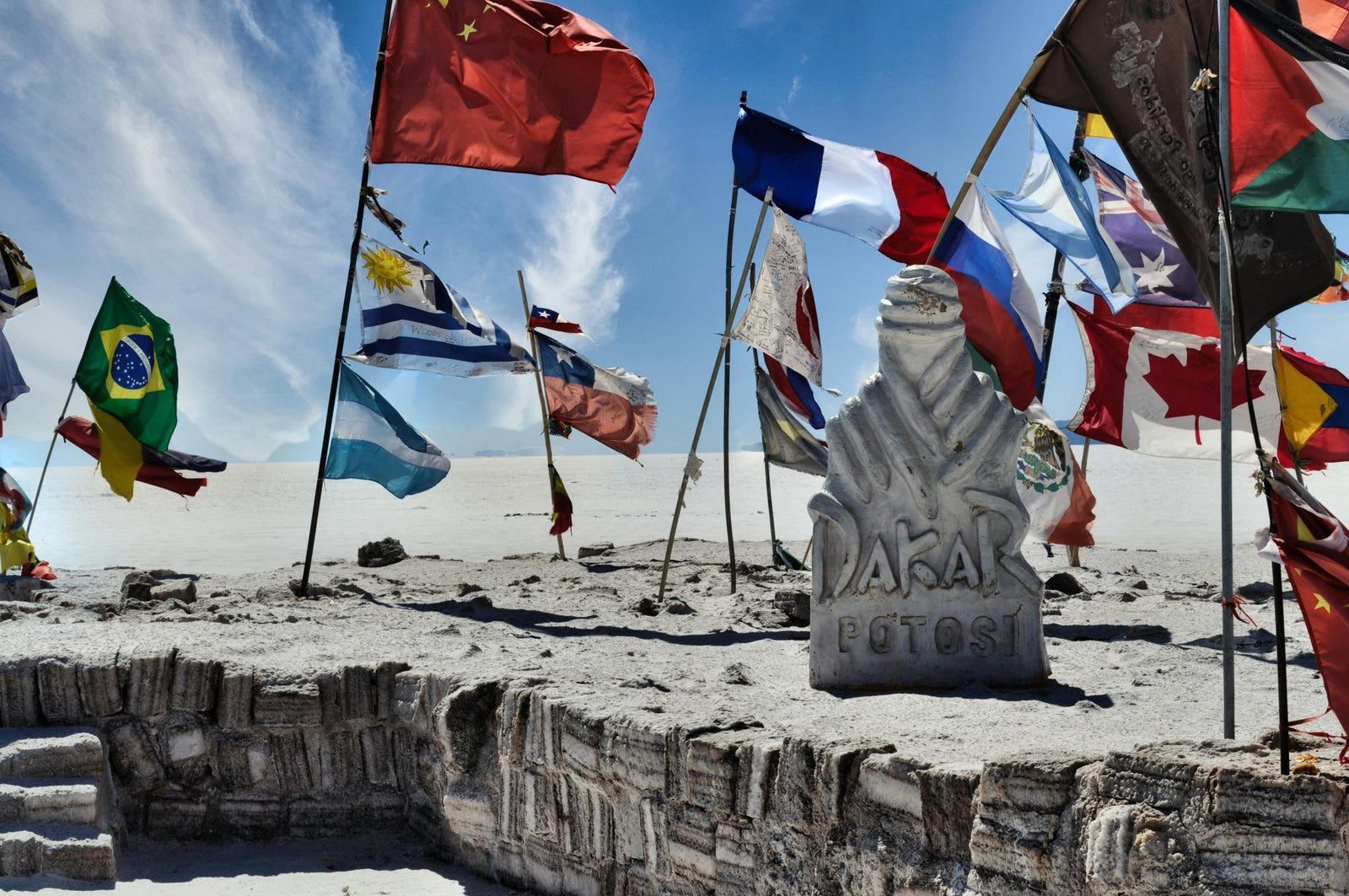Imagine an off-road race across some of the most extreme landscapes on our planet. From scorching deserts to rocky canyons and unpredictable mountain terrain - this race tests the absolute limits of human skill and machine performance. The Dakar Rally is an incredible two-week adventure that only the bravest competitors dare to attempt.
History of Dakar Rally
It all began in 1978 when a young Frenchman named Thierry Sabine got lost in the Libyan desert during another rally. Instead of being discouraged, Thierry was inspired to create an even bigger challenge. A grueling off-road race that will start in Europe and end thousands of miles away in the Senegalese capital of Dakar.
The first Dakar Rally started from Paris in 1978 with just 182 competitors. A mix of daring amateurs and a few professional racers driving cars, trucks, and motorcycles. Little did they know they were pioneering one of the biggest adventures in motorsport history.

The African Expedition
Those early Dakar Rallies were incredible expeditions across unforgiving African landscapes. From the start in Paris, the route went through Algeria, Niger, and Mali, before the final treacherous dash into Senegal. Racers had to be prepared for absolutely everything. Scorching deserts, unpredictable off-road terrain, treacherous towering dunes, and even occasional camel herds crossing their path!
While originally envisioned as an exciting challenge for skilled amateurs, major manufacturers like Renault, Porsche, Range Rover and Volkswagen quickly realized the huge marketing potential. They poured money and resources into building exotic race vehicles, transforming the Dakar into a professional battleground overnight.

Navigation and endurance were key with teams having to carefully plot routes between checkpoints using just basic road books and maps, without any marked course to follow. The camel grass, a ferocious plant clogging filters and puncturing tires, became an unexpected foe.
Political Tensions Lead to Relocations
By the late 2000s, increasing political tensions and security concerns across North Africa made continuing the original African route too dangerous. So, in 2009, Dakar organizers made a major move - shifting the entire rally to the landscapes of South America where it traveled through Argentina, Chile, and Peru until 2019.
While the scenery changed dramatically from dunes to sandy beaches and the brutal Atacama Desert, the core challenge of all-terrain endurance racing remained brutally intact. The South American chapter featured its own set of surprises like extreme elevations over 5,000 meters, unpredictable weather conditions like dense fog, flash floods, and of course, more encounters with the dreaded camel grass!
The Saudi Arabian Shift
In 2020, Dakar undertook another major move to its current home in the vast, desolate landscapes of Saudi Arabia. The Arabian deserts and canyons provide the perfect setting to push the limits of man and machine to the absolute extremes.
The 2023 edition featured over 8500 kilometers of racing across 14 demanding stages taking competitors through incredible dune fields, rocky canyons, fast sandy tracks, and even brief forays into Jordan and Egypt. Navigation remains critically important with teams having to plot routes between checkpoints without any marked course, guided only by roadbooks and GPS coordinates.

A Battleground for Manufacturers
Over the decades, the Dakar Rally has established itself as the ultimate proving ground for off-road vehicle supremacy. All the top manufacturers - Toyota, MINI, Peugeot, Audi, Bahrain Raid Xtreme, and even truck makers like Tatra have poured immense resources into developing specialized machines and technologies to conquer the ever-changing terrain.
Challenges and Dangers
The Dakar Rally is extremely dangerous. The challenging terrains, extreme weather conditions, and long distances push participants to their limits. The rally has seen its fair share of accidents and fatalities. The organizers continuously work to enhance safety protocols, ensuring that the spirit of adventure does not compromise the well-being of the participants.
The Technology Behind the Rally
Modern technology plays a crucial role in the Dakar Rally. GPS systems, satellite communication, and advanced vehicle engineering have revolutionized the race. Teams now have access to real-time data which allows them to strategize and respond to challenges more effectively. Despite these advancements, the rally remains a test of human endurance and skill.
Notable Achievements and Records
The Dakar Rally has seen many remarkable achievements over the years. Stéphane Peterhansel, known as "Mr. Dakar," holds the record for the most wins, with 14 victories in both motorcycles and cars. Nasser Al-Attiyah, Marc Coma, and legends like Ari Vatanen, have etched their names into the Dakar Hall of Fame by overcoming this extreme challenge multiple times.
The rally has also been a proving ground for manufacturers like KTM, Peugeot, and Mini, showcasing their engineering prowess. In the motorcycle category, KTM has been a dominant force, winning 18 consecutive titles and overall, 19 wins. The rally has also seen female competitors making their mark, with Jutta Kleinschmidt becoming the first woman to win the overall title in 2001 driving a Mitsubishi.
Supporting Cast of Unsung Heroes
Even though the focus is on the drivers and riders, the Dakar Rally is a true team effort involving an army of mechanics, engineers, and logistical experts. The amount of damage inflicted on vehicles requires constant maintenance and repair work between stages by highly skilled mechanics.
Logistics teams work around the clock to ensure vital supply lines remain open across thousands of kilometers as the traveling caravan leapfrogs between temporary bivouac camps. Medical teams are also critical, providing emergency treatment for injured drivers/riders in this ultra-hazardous event.
Dakar Rally 2025: Route, Dates and New Features Revealed
The 47th edition of the Dakar Rally will take place from January 3 to 17, 2025, in Saudi Arabia. The event will start in Bisha and end in Shubaytah.
New Features Coming to the 2025 Dakar Rally:
• Different routes for cars/trucks and bikes on certain days
• 48-hour Stage and Marathon Special
• Power Stage, like the World Rally Championship
• Mass start on one day
• Passage through the grueling Empty Quarter sand desert towards the end
2025 Dakar Rally Route Highlights:
• Prologue and loop in Bisha
• Stages 10, 11, and 12 will feature long special stages, more than 350 km in the Empty Quarter
• 48-Hour Special Stage
• The final stage will be a short, mass-start event
Technical Changes:
• Emphasis on T2/stock class, with efforts to attract new manufacturers
• Balance of Performance (BoP) system to ensure competitive balance among cars in the Ultimate category

